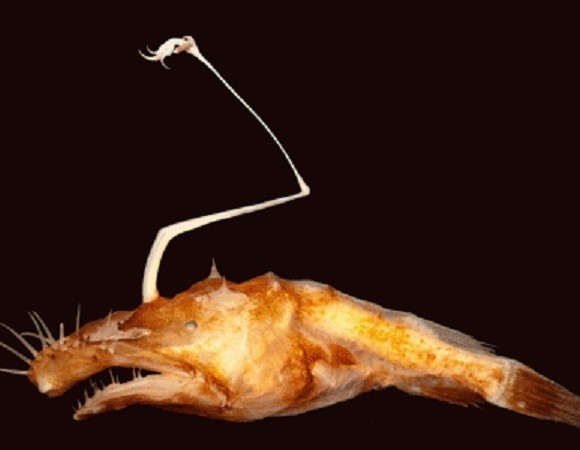Scientists have discovered a new, odd species of fish in the deepest abyss of the ocean where sunlight cannot reach which is also a region where the most bizarre looking fish species dwell.
This new species that might resemble a mutant alien fish is a member of the ceratioid anglerfish family that is discovered in the Gulf of Mexico, deep underwater at a crushing depth of 3,200 feet to 4,900 feet below.
This region deep under the ocean is what scientists call the "midnight zone" where no sunlight can ever reach the bottom since it is so deep where many marine animals rely on bioluminescence as their only source of light.
This new species however, is under the genus Lasiognathus Regan where most recognize this fish as anglerfish due to its pole like appendage that is stretching from the top of its head.
According to scientists from Nova Southeastern University in Fort Lauderdale, Florida this appendage is useful to catch prey where the anglerfish dangles this appendage to lure unsuspecting fish, thinking it's their meal only to immediately find out that they are the actual meal themselves for the anglerfish.
Authors of the study,Tracey Sutton from NSU and Theodore Pietch from the University of Washington now detail this new anglerfish species where this natural yet odd "fishing rod" of sorts is also observed on a number of species among ceratioid anglerfish as scientists believe that it has grown and evolved from a dorsal fin.
Since there are no marine vegetation that can thrive in crushing, dark sea depths, those marine fish that can thrive in this deepest region of the ocean are finding ways to adapt to this food source scarcity via evolutionary strategies such as the anglerfishes' fishing tackle.
Sutton believes that this study and others that involve the deepest, unknown regions of the sea is rich in new discoveries where there's always a good chance to uncover new species that are never seen before, making marine life at this depths truly amazing.
This new species of anglerfish also appears different than other species of anglerfish that are rather round in shape, where this new species appears to be more thin and almost gaunt. The new specimens will be housed under the Ichthyology Collection in the University of Washington.
This new study is published in the journal, Copeia.



























